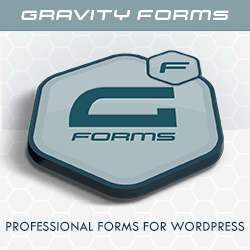Disclosure: We are a professional review site that receives compensation from the companies whose products we review. We test each product thoroughly and give high marks to only the very best. We are independently owned and the opinions expressed here are our own.
Comments on your blog posts are a literal meter for the number of people who not only read your post but also take the time and interest to let you know about it. Comments can be appreciative or even critical, but in any form, they refer to the fact that the readers are reading what you put up and actually reflecting upon your information. However, inefficient comment system on your blog means that you cannot keep a track of ay related comments, as a direct result some discussions about the post might remain unattended. 
Why not to use comment widget systems?
There are ways to re-figure your comment system to help with this problem. However, these processes employ technical aspects that are complicated. In the best case scenario, you get to ease out with understanding the technique but adjusting these widgets/systems with your blog’s design can turn out to be a nightmare ( The widgets can be really ugly!). Yet, simple adjustments to your personal blogging style as well as the adaptive style for your blog can give amazing results, especially for this problem (without any external adjustments and widgets at all!). Take the way of these simple steps and go one-step at a time to get the solution without overwhelming yourself or your readers at any point. Image Source: Flickr – Journal Entry
Directly link or respond to individual commenters
In any event, comments are much more interesting if the follow up is honest and it usually leads to a conversation. However, following this conversation is the main problem, especially in the absence of a system to avoid scrolling to the end of all the unrelated individuals comments on the page. It can get annoying and sadly the reason for the stop of such interesting discussions. Yet, the solution is so simple and if you put it parallel to real life, it is also the standard protocol to conversations in any form. When you follow up a particular comment, address that commenter directly in your follow-up comment. This is the first step but it is not the only one. Just putting in the name of the commenter will not align the conversation. All the important CMS (WordPress, Blogger) have an important feature – the comment id numbers. Use these numbers to not only address but link to the individual commenter and their original question or query. This will take care of the conversation alignment and you can continue following up multiple commenters without disturbing individual conversations or compromising on the style of the post.
Styling tips to attract professional comments
You have to work around some design basics to make sure that your efforts in this regards are complete. The adjustments will yield results and they are all geared towards flawlessly merging your comment solution with a style that attracts more readers to not only follow your comment conversations but to get in with their own comments.
Maintain a two-step approach to styling your comment section
Separate the style elements for regular links that commenters put in their comments with your comment id links for these commenters. You can experiment with different combinations until you get to the one that gels with your basic design and garners more results. The style elements should be geared towards subtle highlighting of the particular comment, but never overwhelming important details such as the name and URL of the commenter. Subtle never means underplayed. The expected response not to focus on the elements directly, but to use them as guiding steps towards follow up of the conversation thread For instance, you can address the commenter in italicized font but embolden their names to separate the two. You can also put in a simple code adjustment to create different mouse-scroll behaviors for the address links and the regular comment links. Adjusting the codes in the style sheet will mean that you do not have to manually put in efforts for each time you post on your blog. In addition, the whole purpose of going through these steps is to cultivate audience interest to get more professional readers (hence, more professional comments!). Comments are a great way of interacting with your target audience. Yet, the underlying purpose is to enrich the posts with inbound links, back links, and all such rich technical aspects that increase and sustain your page rank (ultimate goal!).
What are your thoughts?
Guest article – Apart from helping bloggers to achieve blogging success, Jane also writes about discount deals as that of carbonite offer codes and sittercity special codes. She is one of the authors for a discount coupon blog that features carbonite and sittercity discount deals.




I agree that we have to improve the commenting section of every blog and this will be for the readers and visitors too…
You are always a great writer Jane. I appreciate a lot of your writings. The comments section plays a big part in analyzing the quality of your content which is not just being reflected by the no. of traffics you generate but also in the no. of genuine comments.
Great tips Jane. The commenting section is key to promoting engagement on a blog. Nice to see you adding more to your guest blogging portfolio. You’re everywhere!
Disqus is a great easy way to improve the comments section of a blog. And it has convenient plugins for WordPress and other services.
Thanks for the idea and tips you have here for us…It looks really awesome!!